Growing mint plants can add a fresh flavor to drinks and food, but it can be a little finicky in terms of watering. Mint grows similar to the way weeds do, but they do need enough water to grow well.
Otherwise, your mint leaves might start wilting and looking a little sad.
There are two main things to know about watering mint plants: how much water they will need, and when to water them.
How Often to Water Mint Plants
Mint loves water, but not too much. It’s a fine balance between overwatering and underwatering, so you need to take into account a few different things.
When figuring out how often to water mint plants, you want to take into account where it’s growing. If your mint is outside in the ground or in a pot, water it every 1-2 days. If it’s going to be really hot outside, water it more frequently. If it’s going to rain, you can skip watering.
If planting mint indoors, you should be fine watering it every other day. Before watering, check the top inch of soil for moisture. If it is still moist, you can skip watering until it’s drier.
When you are watering mint, drench the soil thoroughly so it sinks down far below the surface. But make sure your container has good drainage holes so the excess can run through.
1. Mint Watering Schedule by Location
The location of the plants is going to be a big factor in terms of how frequently you should water mint.
Watering Mint Indoors
If you are growing indoor plants in a pot or container, you can generally water it once every few days. The soil can dry out quickly in indoor settings, especially if it’s in a warmer room.
Keep the soil moist and warm, watering as often as every three days. But also make sure the plant does not sit permanently in wet soil or this can cause overwatering issues (see below).
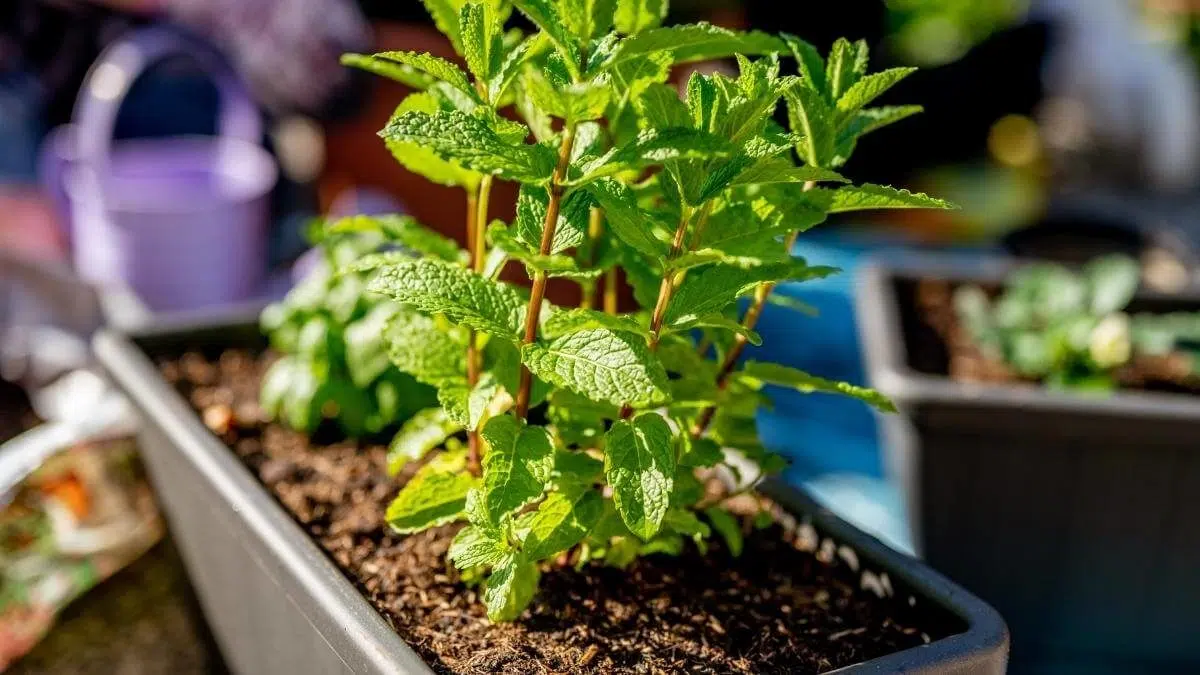
Watering Mint Outside in a Container
If you have mint planted in a pot outside it will require more attention because of its climate. The sun’s rays are much stronger than the light it will get indoors, and that could cause the soil to dry out faster.
If the weather forecast is calling for a lot of rain, hold off on watering the plant so it doesn’t get too much water.
If the weather forecast is super dry and hot, make sure to check the plant daily (sometimes more than once per day) to see if it needs a drink of water.
You want to water often so the soil does not dry out completely, but be aware that overwatering can also damage the plant.
Watering Mint in the Ground
If you have outdoor mint plants in the ground, you usually only need to water them every few days unless there are extreme heat conditions. Depending on where you live, your plants can often see quite a bit of rain during parts of the season.
If you live in a more dry area or are experiencing weeks where there is no rain in sight, you’ll want to check your mint daily to make sure it doesn’t need water.
2. The Age of the Mint Plants
How old your mint plant is will also determine how frequently to water your fresh mint.
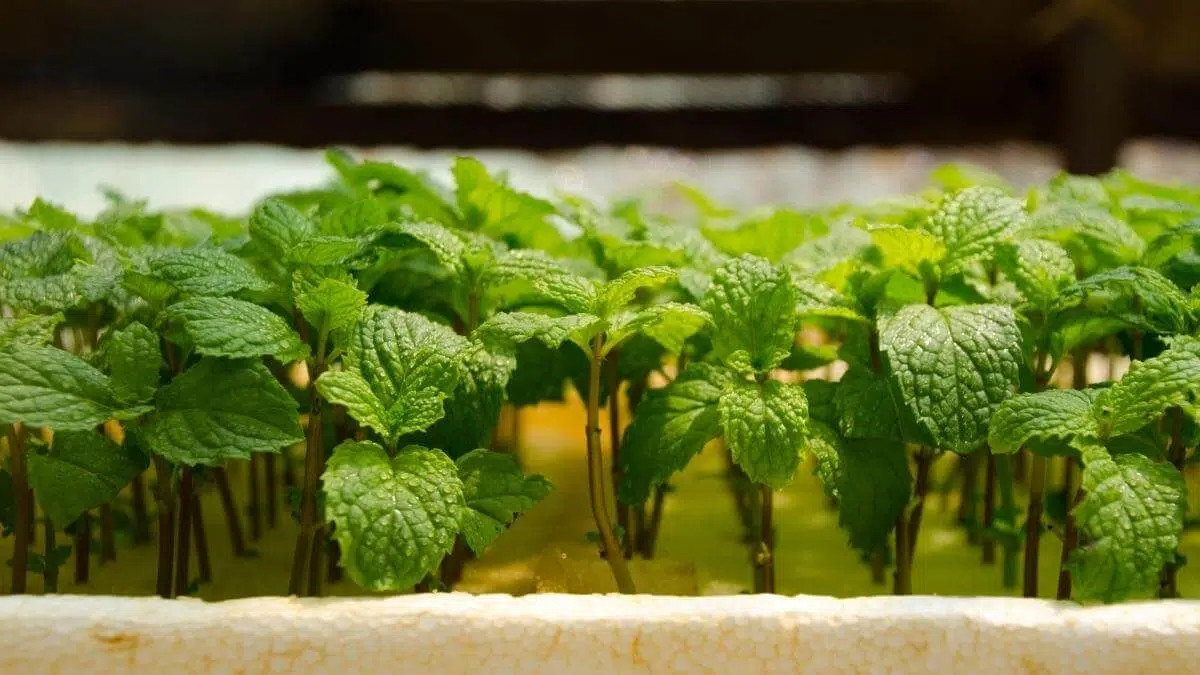
Watering Mint Seedlings
Seedlings of any plant are going to require more water than an established plant would. Mint seedlings are no different.
With tender plants that are younger, they often do best getting watered more regularly. Check on them daily to make sure they are doing alright and water mint seedlings daily is possible.
But if you miss a day it’s not going to be the end of the world, just restart your mint plant watering the next day.
Watering an Established Mint Plant
A more mature, full-grown mint plant, are hardier and can usually go a few days without being watered. However, if the weather is very warm and dry, check on them daily.
When watering, be sure to use your hose nozzle on the lowest setting or invest in an inexpensive watering wand that helps with accuracy. You want to water the ground, not the leaves themselves.
Mint can run into a few issues if its leaves get and stay wet, this is especially common if you end up watering your plant closer to the end of the day or at night. The leaves won’t have time to dry out and this can introduce pests and disease to take root.
- Made with aluminum making it lightweight, yet durable
- Rubber foam along the wand for additional protection at the natural wearing point.
How to Tell if Mint Needs Water
There are a few ways to check if your mint plant needs to be watered.
Look for Wilting Leaves
Oftentimes, when mint needs water it will tell you. No, it won’t say anything out loud, but actions speak louder than words anyway right? 😉
Mint leaves are one of the first things to show signs of drying out. So its leaves will often look like this and that’s a sign to you that you need to give that bad boy a drink.
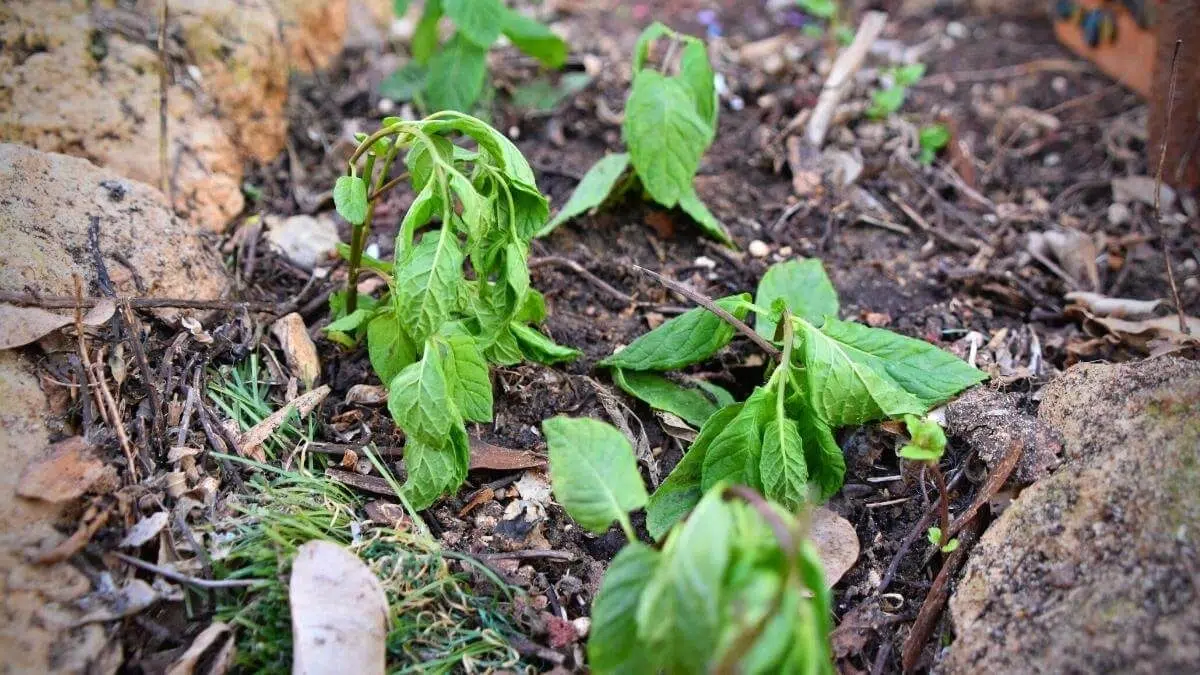
Test the Soil with Your Finger
You can also check the top inch or so of the soil surface. If it’s dry and you don’t feel water an inch down, go ahead and water it.
If you can feel any kind of moisture, it’s probably best to wait a day so you don’t overwater your mint.
Overwatering Your Mint
One of the main problems gardeners have, especially as newbies, is that they are constantly thinking about their plants and wanting them to do well, and they end up overwatering them.
Overwatering your mint can cause root rot, where the roots essentially drown from not getting enough oxygen, and this can kill the plant.
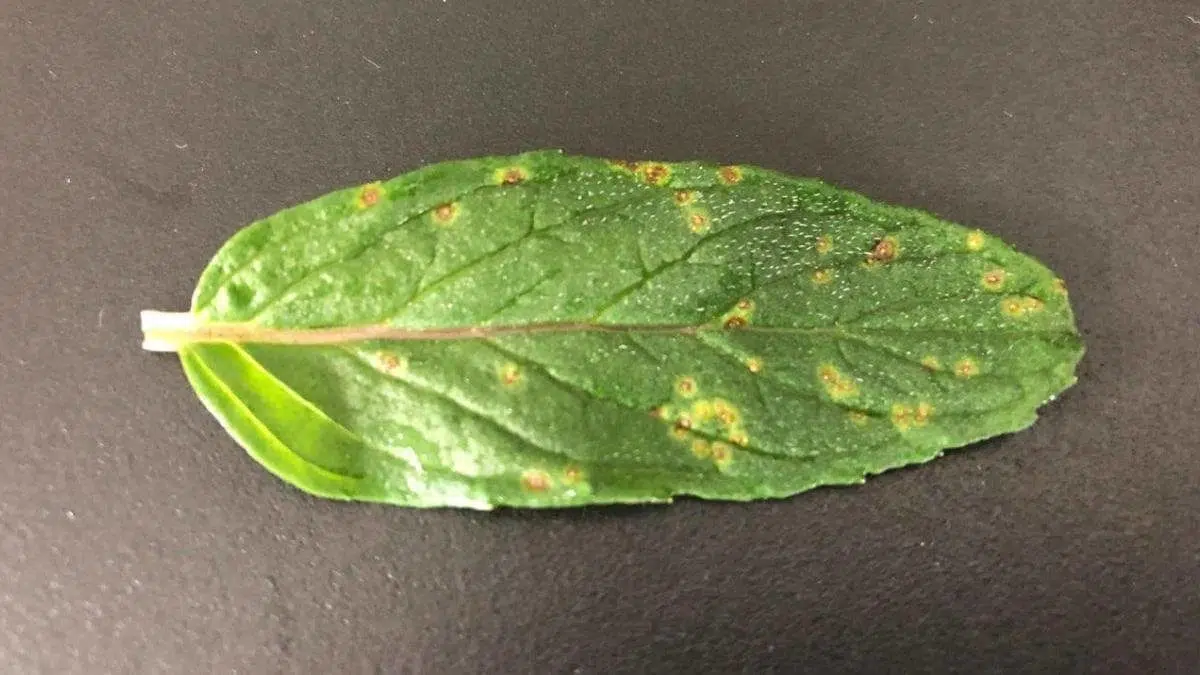
Signs of Overwatering
There are a few tell-tale signs that you’ve overwatered your plant:
- The leaves begin turning yellow from the bottom of the plant first, eventually, these leaves will start getting brown spots and the edges of the leaves will turn brown.
- The stems near the soil line will start to look soft, or if you have weak stems.
- Just like if you have too much water sitting in your house, you’ll end up with some mildew, rot, and even rust – in mint’s case these are mint rust, powdery mildew, stem rot, and others.
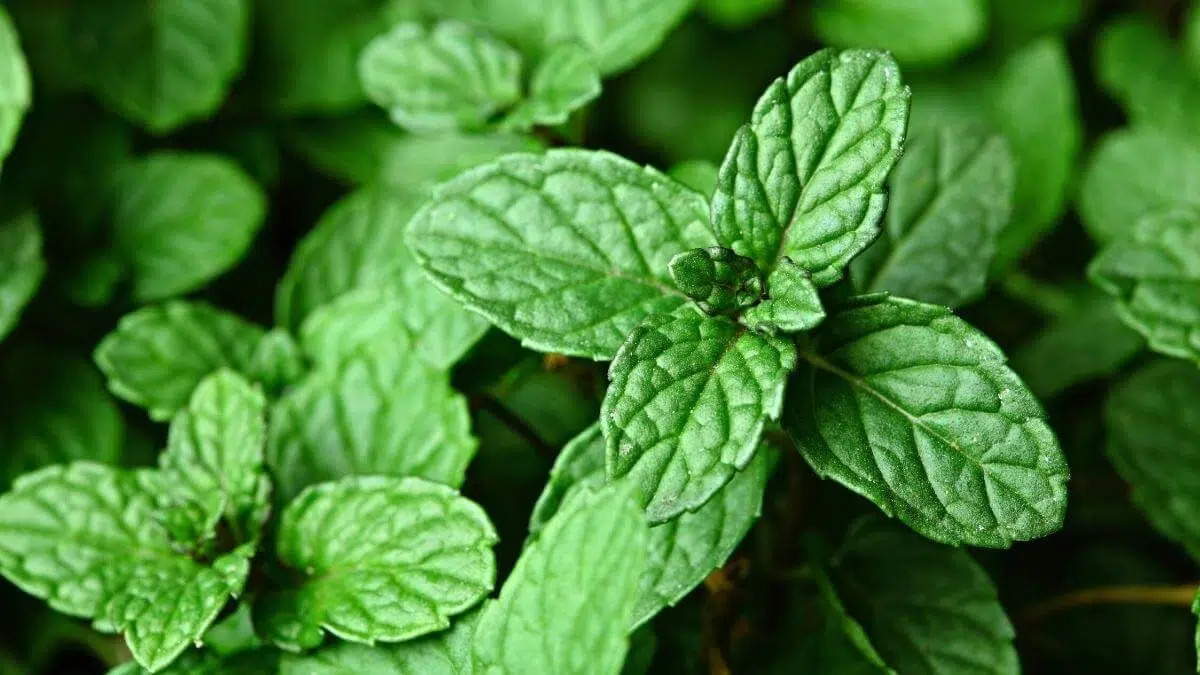
What to Do if You’ve Overwatered Your Plant
Oftentimes, by the time you’ve noticed your plant has been overwatered, it can be too late.
Let the plants dry out almost entirely before watering again. You might need to replace the soil they are in if they are in a container.
When you take the mint out to replace the soil, make sure the roots have enough room and aren’t rootbound, if they are you might want to repot them into a larger pot.
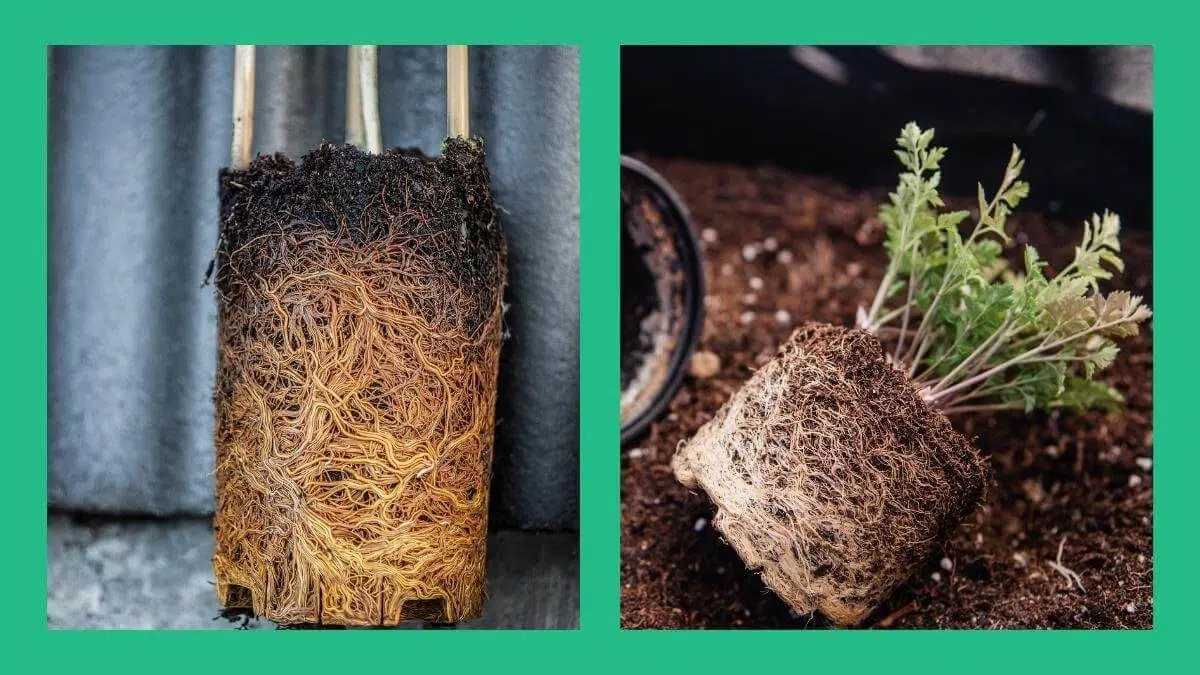
If any parts of the plant are impacted by fungal diseases like mint rust, remove those with sharp pruning shears, and dispose of them. Do NOT add these to your compost bin.
Apply copper fungicide to the rest of the plants to avoid the spread of the disease. Here are a few good options:
Once you do go back to watering, here are a few tips to avoid this from happening again:
1. Try to cut your normal watering schedule in half. What you were doing before was clearly not working, so try and change it up a bit. If the plant’s leaves start wilting, you can slowly increase that until it doesn’t happen regularly.
2. Make sure your pot or container has enough (working) drainage holes. If they get clogged or aren’t able to drain the excess water, root rot and fungal issues are inevitably going to happen again.
3. If your plant is in a pot, try out “bottom watering“ and see if that helps you keep a good watering routine without overwatering your plants.
4. Get a self-watering pot. You don’t have to be embarrassed if you need a little help getting the hang of this watering thing. It might seem easy, but it is one of the more complicated pieces of growing your own garden! Self-watering pots take the guessing out of it and just automatically water the plant as needed.
Add Mulch to Reduce Chance of Dried Out Mint
When growing plants in the ground, you can save yourself a lot of hassle by mulching around the plants.
This helps reduce evaporation and keeps the soil from getting too warm so your plants don’t dry out too quickly.
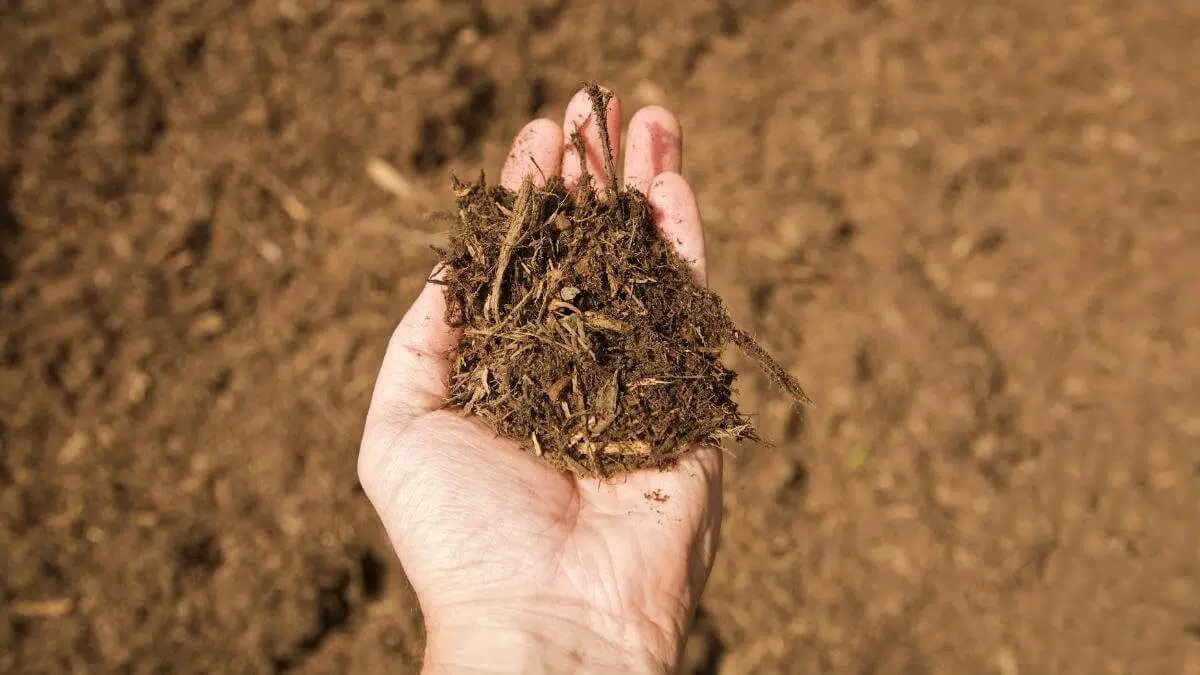
But also it won’t get too cold and cause the mint plant to go into shock.
Another added benefit of mulch is that it reduces the splash-back effect and helps prevent dirt and possible disease from splashing up onto the leaves when it gets watered or it rains.
Add 1-2 inches of cedar mulch (my favorite), straw/hay, or other kinds of mulch.
Frequently Asked Questions About Watering Mint
Do You Water Mint Daily?
You don’t need to water an established mint plant daily. However, if you’re growing mint from seed, mint seedlings will need more water than a full-grown plant.
Can you Overwater a Mint Plant?
Yes, you can absolutely overwater a mint plant. When you overwater your plants, you expose them to the risk of root rot and fungal diseases like mint rust.
If you do overwater your plants, let them fully dry out before you continue watering them.
If you’re underwatering or overwatering, there are a few ways to remedy that such as cutting back on how often you water or getting a self-watering pot so it’s easier to manage.
Growing Mint is Rewarding
Maintaining your mint plants should be easy enough. Just make sure to check for wilting leaves, test the soil with your finger, and if it’s dry water the plant – but not excessively!
And, if you’ve only ever grown common mint, did you know you can grow apple mint and chocolate mint as well? You can check out more varieties of mint here.



